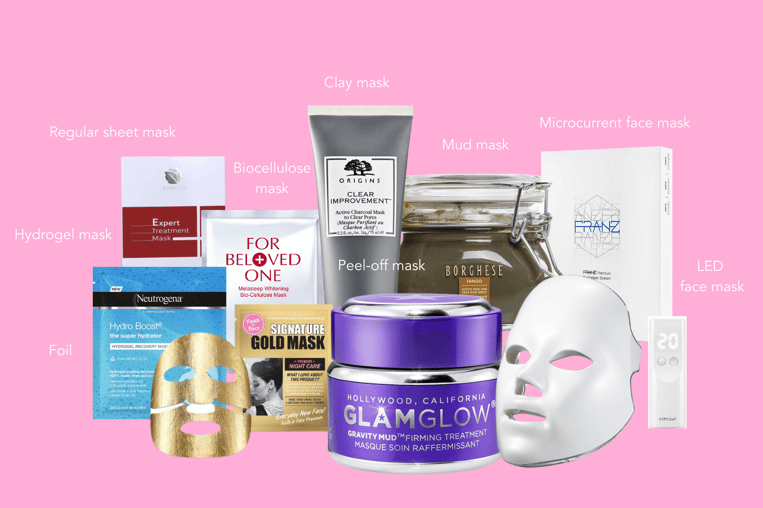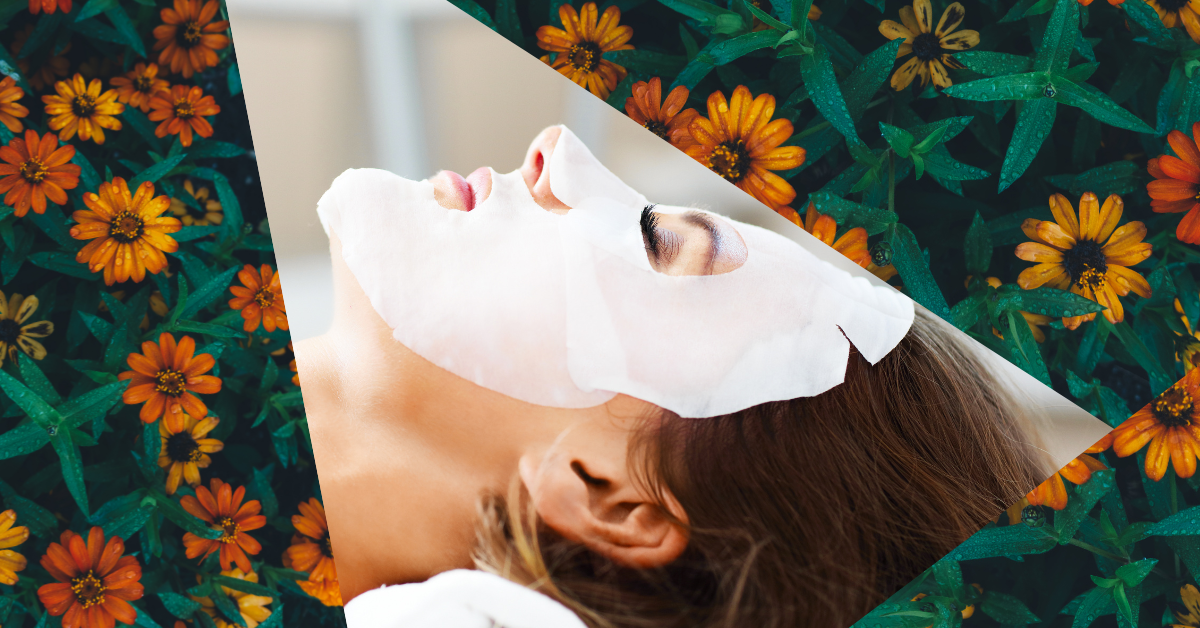With spas closing and work-from-homers on the rise, there’s more emphasis on at home beauty rituals than ever before. The self-care equivalent of slapping on a figurative band-aid, masking has stood the test of time as being the ultimate quick-fix beauty solution for dull and problematic skin.
Whether face masks are a part of your daily skincare routine or you’re in the mood to indulge your skin after a long day of Zoom calls, it’s good to be able to tell different face masks apart so you know how to address your specific skin needs. From run-of-the-mill sheet masks to biocellulose sheet masks, here’s our guide to finding the perfect mask for you!
-
Regular sheet mask
The most common face masks, sheet masks are face-shaped breathable fabrics that are typically the easiest to produce, made from non-woven fibre, microfibre, cotton, Cupra or Tencel. The fabrics are soaked with different kinds of serums that provide hydration and other beautification benefits by sinking directly into your skin. Designed to nourish and moisturize rather than exfoliate, sheet masks are recommended for use around 1-3 times per week.
-
Hydrogel mask
Hydrogel masks lean more on the higher-end side of the spectrum than sheet masks, as they blend cosmetic serums with gelatin to lock in moisture. Most hydrogel masks come in two parts, which can be adjusted to fit the shape of your face. The jelly-like texture ensures a super snug grip on your skin, allowing the nourishing ingredients to penetrate your skin while also providing an added cooling and soothing effect.
-
Mud mask
A true mud mask utilizes soil and minerals that help improve skin conditions such as psoriasis and acne. Mud is a natural healing agent, and in addition to improving blood circulation, is effective at cleansing skin of dirt and impurities to make it appear brighter, more moisturized, and refreshed. Follow instructions on usage time and wash off thoroughly when done.
-
Clay mask
A natural drying agent, clay is an effective mask-type for excessively oily skin that is prone to breakouts. Not only do clay masks absorb dirt and oil, they can also help to tighten sagging skin, exfoliate dead skin cells, and shrink enlarged pores. Follow instructions on usage time and wash off thoroughly when done.
-
Peel-off mask
The main purpose of peel-off masks is for exfoliation. After applying, the mask usually takes on a glue-like texture and dries out over time to form a thin, peelable layer over the skin. Often, the masks contain water-soluble alpha and beta hydroxy acids derived from plants to slough away outer layers of skin. Once peeled, the mask takes away various impurities and dead skin cells with it – and can be extremely satisfying. However, peel-off masks aren’t recommended for those with sensitive skin.
-
Foil
A popular masking trend that has taken Instagram by storm, the foil mask (aka the “Iron Man”) is a fast-absorbing product that drenches your skin with a large concentration of serum – firmly locked in with the foil material that prevents the treatment from evaporating. The foil makes sure the ingredients have nowhere to go other than your skin, promising a 25% faster penetration rate than cotton sheet masks.
-
Biocellulose mask
Originally developed by German scientists to treat burn injuries, biocellulose was first used as a temporary skin on burn victims. The gel-like and ultra-thin biological fibres have a soft, smooth, and elastic texture, which make them great at retaining fluids and clinging to the skin for maximum delivery of active ingredients. Biocellulose masks tend to be pricier than sheet or gel masks and are 100% biodegradable.
-
Microcurrent face mask
The world’s first microcurrent at-home face mask was developed by Korean skincare brand, FRANZ. Microcurrents have long been used to deliver skincare ingredients to the skin, making it easier to absorb active ingredients. FRANZ’s microcurrent mask technology uses the difference of ions between the negatively charged skin surface and the negatively ionized serum ingredients so that these ingredients can permeate deeper layers of the skin.
-
LED face mask
Originally a NASA technology that was later adopted by the skincare industry, LED light therapy uses different frequencies of light to address various skincare concerns such as acne (blue light), signs of aging (red light), scarring or general wounds (white light), and tired eyes (combination of red, yellow and orange light).
Before using any mask, the best starting point is freshly cleansed skin. Start from outside-in types of masking such as sheet and biocellulose masks, and as you age, explore masks that work on a deeper level to improve your skin from the inside-out. “Most expensive” doesn’t necessarily mean better, as choosing the right mask depends on your specific skin needs and goals. Whether you’re masking to relax or to prep your skin for an event, remember to listen to your skin and develop a sound routine around your budget and lifestyle!

|
|
Materials & texture |
Main benefits |
Adhesiveness rating |
Duration |
Suitable for skin type |
|
Paper masks |
Non-woven fibre, microfibre, cotton, Cupra or Tencel. |
Hydration from increased water content |
6/10
|
15-25 minutes |
All skin types, especially dry skin |
|
Hydrogel |
Bio-cellulose or synthetic polymers. Gel or jelly-like texture. |
Hydration from increased water content |
10/10 |
15-30 minutes |
All, especially dry skin |
|
Mud |
Mud (water-based) |
Skin-healing, nourishment & hydration |
10/10 |
20-30 minutes |
All skin types, dry and dull skin |
|
Clay |
Clay |
Drying – absorption of dirt and excess oil |
10/10 |
Up to 40 minutes |
Oily, breakout-prone skin. Not suitable for dry skin. |
|
Peel Off |
Charcoal, antioxidants and botanicals |
Exfoliation of dead skin, oil reduction, minimized pores |
10/10 |
Up to 15 minutes |
Oily, acne-prone skin. Not suitable for sensitive skin. |
|
Foil
|
Tinfoil on the outer layer, biocellulose on the inner layer |
Deep hydration & nourishment |
5/10 |
10-15 minutes |
All skin types |
|
Biocellulose |
Soft biological fibres |
Hydration from increased water content |
8/10 |
15-20 minutes |
All skin types |
.png?width=180&height=80&name=imgpsh_fullsize_anim%20(1).png)

